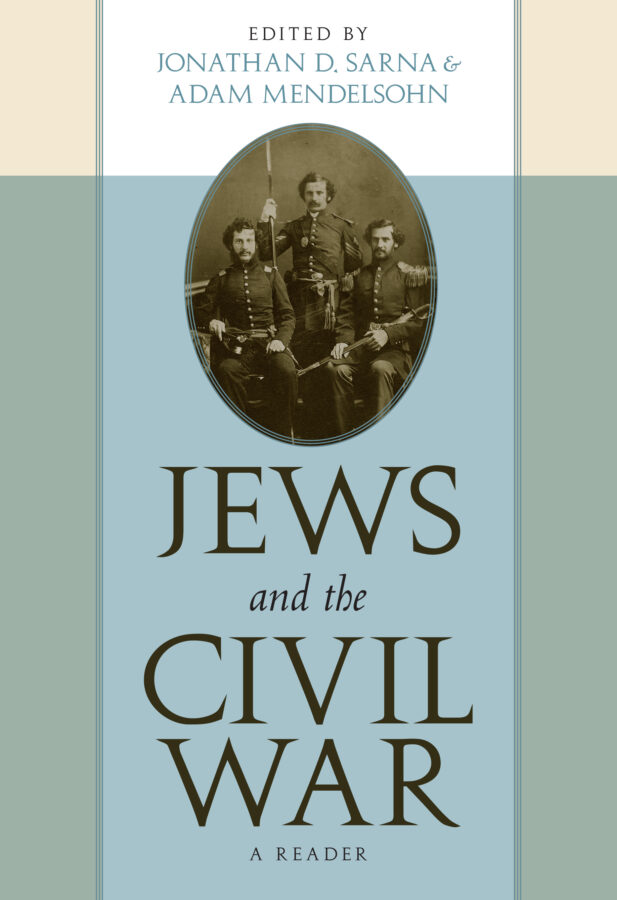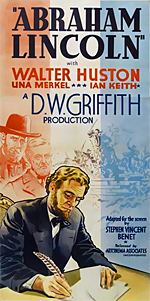Jews and the Civil War: A Reader edited by Jonathan D. Sarna and Adam Mendelsohn. New York University Press, 2011. Paper, ISBN: 0814771130. $24.00.
 The Jewish experience during the Civil War has often been ignored or side-stepped by both Civil War historians and historians of American Jewish history. Thankfully, with the publication of Jews and the Civil War, editors Jonathan Sarna and Adam Mendelsohn have put together a collection of seminal previously published works on this topic. The goal, as the authors state in their preface, is to rescue and organize classic scholarship concerning Jews during the Civil War era with the hope of inspiring further interest in and research within this field.
The Jewish experience during the Civil War has often been ignored or side-stepped by both Civil War historians and historians of American Jewish history. Thankfully, with the publication of Jews and the Civil War, editors Jonathan Sarna and Adam Mendelsohn have put together a collection of seminal previously published works on this topic. The goal, as the authors state in their preface, is to rescue and organize classic scholarship concerning Jews during the Civil War era with the hope of inspiring further interest in and research within this field.
Adam Mendelsohn’s introduction offers a lesson on the historiography of Jews and the Civil War through the period of the first century following it. Up until the 1950s, most studies tended to be conducted by amateur historians who offered hagiographic accounts of the Jewish experience in the Civil War. Bertrum Korn transformed the field, however, with his path breaking American Jewry and the Civil War published in 1951. Undermining many of the myths created by previous works, he offered a much more critical assessment of Jews during the Civil War, looked more in-depth at Jewish attitudes towards slavery and abolitionism, as well as the ways in which prominent figures like Judah Benjamin identified as Jews. Inspired by Korn’s work, professional historians of American Jewry followed his lead. The scholarship continues, however, to mainly focus on the questions Korn raised. Consequently, Mendelsohn suggests, more attention needs to be given to Jewish soldiers, the impact of the war on Jewish civilians, and Jews during the Reconstruction era. Following the historiographic essay, Eli Evans’ “Overview” provides an introduction to some of the major events and people essential for understanding the Jewish experience during the Civil War. Breaking the era into themes, he provides a concise narrative about Jews in the South and North, Grant’s Order no. 11, as well as individuals like Judah Benjamin and Isachar Zacahrie.
The editors carefully divide the remainder of the book into thematic sections. Beginning each of these sections with a short introductory essay, they summarize the historiography of the theme and often point to where more research is needed. Broadly conceptualizing the “Civil War” beyond the period of the war itself, the first two sections focus on “Jews and Slavery” and “Jews and Abolition.” Seymour Drescher’s article on Jewish involvement in the slave trade offers a sophisticated analysis of this controversial topic by contextualizing the slave trade, broadly in terms of Jewish and European history, but also specifically in terms of the different phases of the slave trade. This contextualization enables Drescher to conclude that Jews played only a “minor” role in the Atlantic slave trade (68), leaving him with the bigger question as to why Jews did not play more of a role, because they could have (70-71). Bertram Korn’s essay on Jewish slaveowners in the antebellum South looks at Jewish slaveholding from a variety of perspectives, such as how Jews treated slaves, whether or not Jews emancipated slaves in their wills, and the extent of miscegenation between Jews and their slaves. Based on his research, he concludes that Jewish slaveowners were ingrained with the southern mentality towards slavery and not in any way significantly different from their Christian neighbors. Jayme Sokolow’s article on Jewish abolitionists, in contrast, argues that their motives were very different from American Christian abolitionists in that Jews who advocated against slavery were usually inspired by their political or religious experiences in Germany. In the section “Rabbis and the March to War,” Isaac Fein’s 1961 article on Baltimore rabbis, focuses on Rabbi David Einhorn, who was very outspoken against slavery. But that view was tempered, as Fein shows, by Rabbi Benjamin Szold and Rabbi Hochheimer who pleaded for moderation to avoid sectional division, and Rabbi Bernard Illowy who supported the pro-slavery position.
While the editors clearly indicate that much more work needs to be done on the experience of Jewish soldiers, Robert Rosen’s relatively recent article on “Jewish Confederates” provides a good general understanding of Jews who fought for the Confederacy. They fought because they saw themselves as southern, but also wanted to prove themselves as Jews. Jews were also able to move up in rank through the Confederate army, many becoming officers. Jacob Marcus’ 1949 study of Louis Gratz and Stanley Falk’s 1959 study of Alfred Mordecai, while much older, show that biographical research can provide important insights about Jewish soldiers, including how they dealt with issues of divided loyalty and how they experienced the war as recent immigrants.
Some of the best work in the book is located in the sections “The Home Front” and “Jews as a Class.” Dianne Ashton looks at Jewish women in both the North and South during the Civil War and how they understood themselves in relation to those who were different. By analyzing the letters written by Jewish women, she argues persuasively that Jewish women learned to veil their differences and highlight their commonalities in order to “reshape their local communities and their family ties” (301). Gary Bunker and John Appel, looking at popular magazines published during the Civil War, trace the development of the term “shoddy” as an anti-Semitic reference frequently used, demonstrating the strength of anti-Semitism at the time. Two articles on General Ulysses S. Grant’s anti-Semitic Order no. 11, John Simon’s about why Grant issued the order and Stephen Ash’s on how Jews responded, demonstrate the importance of this episode in the American Jewish experience more generally. Joakim Isaac’s study of Grant’s presidential candidacy in the section “Aftermath,” however, reveals that while Democrats made Order no. 11 an issue in the 1868 election, it did not dramatically influence how Jews voted.
In addition to Mendelsohn’s introductory essay, the authors provide a very good bibliographic essay at the end of the book that includes several contemporary works. It would have been helpful, however, had they offered a more thorough discussion of the new types of methods and approaches historians of Jews during the Civil War era have employed. In this respect, including more of contemporary articles in the book would have also proved particularly useful.
These criticisms notwithstanding, scholars and lay people alike will find in Jews and the Civil War a rich platform for beginning to understand the history of the Jewish experience during the Civil War era.
Daniel Kotzin is an Associate Professor of Social Sciences at Medaille College in New York.
